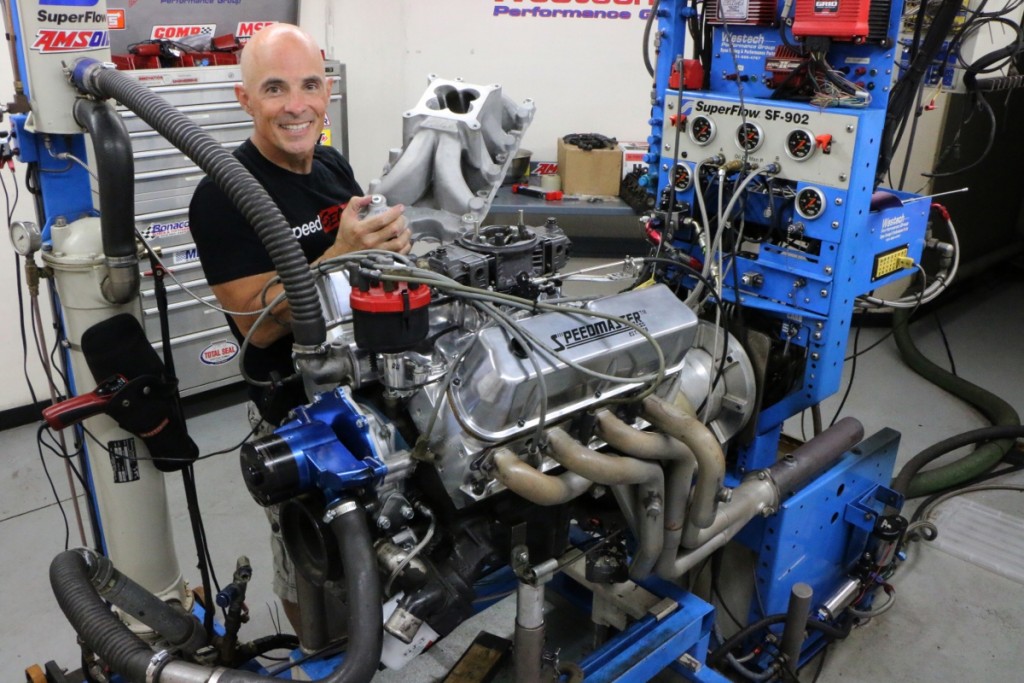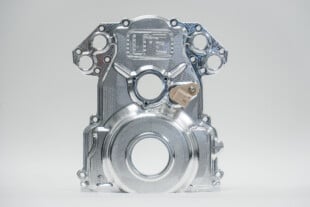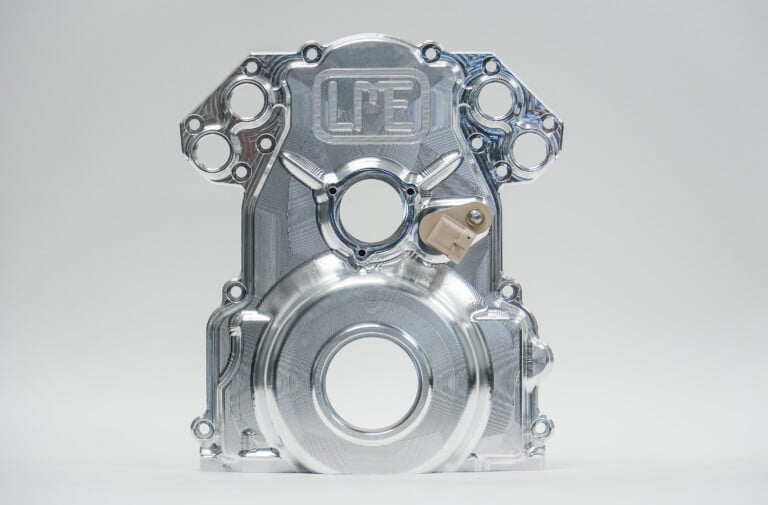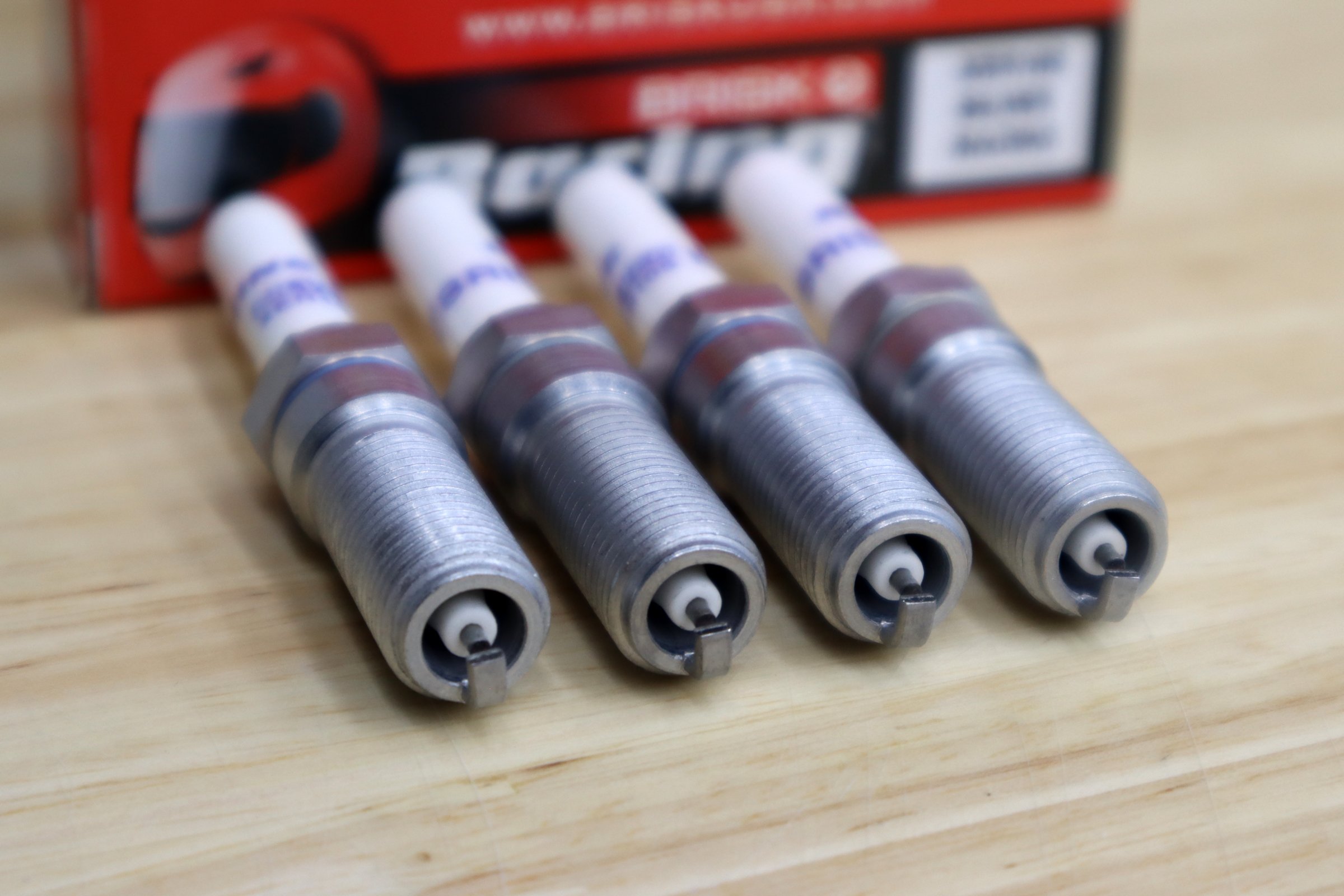Words and Photos by Richard Holdener
The single- or dual-plane intake argument is likely as old as the V-8 engine itself. While the 5.0L Ford was originally equipped with factory fuel injection, the basic small-block Ford had been run in carbureted guise for years prior to the introduction of sequential fuel injection. Choosing the proper carbureted intake for your 5.0L Ford is critical for maximum performance, but know that the word maximum might not just mean peak power numbers.
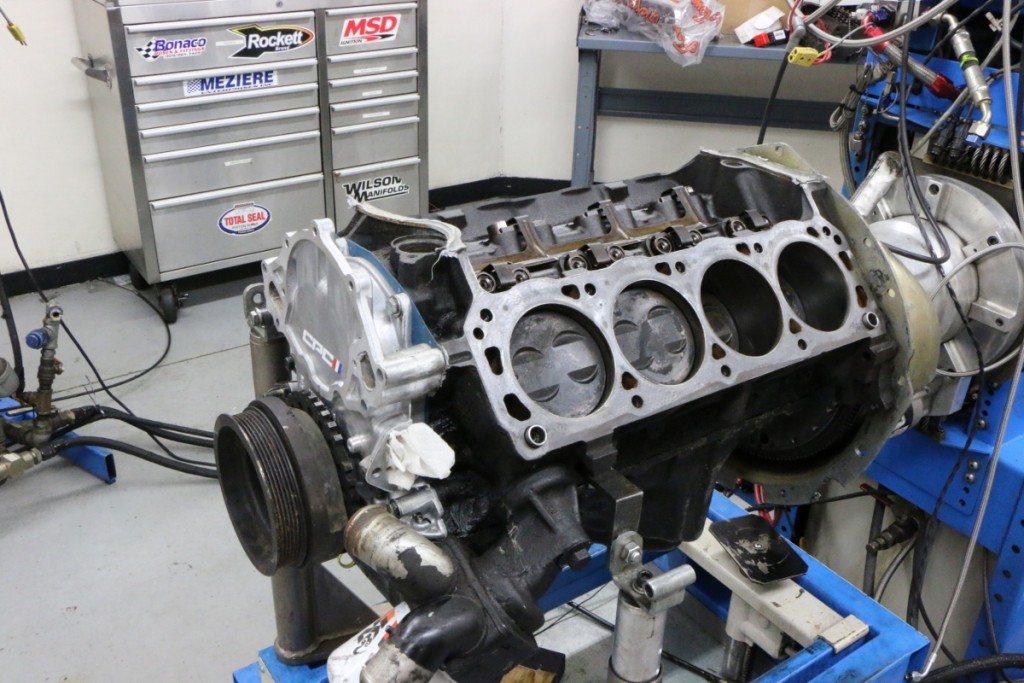
Our test motor started out as nothing more elaborate than a used Ford Explorer motor from a local LKQ Pic-a-Part wrecking yard.
Peak power is one thing, but for many, maximized power deals with power production through the entire rev range. Now, toss in other important factors (at least for street cars) like drivability, fuel mileage, and even torque converter compatibility, and you start to see that man does not live by peak numbers alone. You see, despite similar peak torque numbers, the two Speedmaster intakes tested here offered decidedly different power and torque curves, to say nothing of drivability.
Named after the Australian arachnid, the Funnel Web was designed to maximize high-rpm power production of high-performance, carbureted engines. Like most single-plane designs, the Funnel Web featured a large, common plenum feeding eight individual runners. The high-rise, raised carburetor flange provided a straight shot for airflow entry into the cylinder head. The added height also allowed for an increase in runner length for the four middle (short) ports, always an issue with single-plane intakes on V8s.
Short of a true tunnel ram, it is difficult to have equalized runner length on a single-plane manifold. Unequal runner length creates a situation where some cylinders produce peak power at different engine speeds than others. The Funnel Web design does not allow for true equal runner length between cylinders, but the added height does decrease the difference between the four long and four short runners.
While we all like to brag about the peak power numbers, the reality is the vast majority of carbureted 5.0L engines spend MOST of their time well below that power peak.
The question now is how will the Funnel Web compare to the more traditional dual-plane design? The single- vs dual-plane intake debate comes down a simple matter of operating (engine) speed. The dual-plane manifold, like the Eliminator intake from Speedmaster, was designed to enhance power in the low and mid range, though it pulled surprisingly well on the top end. This combination makes it ideal for the vast majority of street and even street/strip applications. On most performance engines (like our modified 5.0L), the dual-plane will likely sacrifice power at top of the rev range compared to the single-plane design. For a race-only motor, that spends its time at the top of the rev range, racers almost always choose the single plane.
In the end, the owner must decide where power production is most important, as there will ALWAYS be a trade off in power. The question now is how much low-speed torque are you willing to sacrifice for the stellar top-end charge?
Naturally, the debate rages on and on, but perhaps the best way to illustrate the difference in power is to compare them on the dyno. Obviously, the dyno graphs do not directly show things like drivability and mileage, but low-speed torque production provides a strong indicator of both.
To clearly illustrate the power differences between the single-plane Funnel Web and dual-plane Eliminator intake, we assembled a 5.0L test motor. The 5.0L started out life in an Explorer, but was modified for this test with the removal of the factory fuel injection, cylinder heads, and camshaft. In their place, we installed a set of CNC-ported, 11R 170 heads from TFS, an XE274HR camshaft from COMP Cams, and our pair of intakes. Feeding each intake was a Holley 650XP carburetor, while spent gases exited through a set of 1 ¾-inch Hooker headers. Additional performance components employed on the test motor included 1.6-ratio roller rockers from TFS, Fel Pro 1011-2 head gaskets, and ARP head bolts. Prior to testing, we filled the crankcase full of 5W-30 Lucas synthetic oil, then installed the Meziere electric water pump (no other accessories were employed).
With our 5.0L Ford ready to test, we first installed the dual-plane Eliminator intake from Speedmaster. The dual-plane design promised ample torque production and delivered just that. Run with the dual plane, the 302 Ford produced 394 hp at 6,300 rpm and 370 lb-ft of torque at 4,300 rpm. Torque production exceeded 360 lb-ft from 3,700 rpm to 5,000 rpm. After installation of the single-plane Funnel Web intake, the peak horsepower output jumped to 415 hp, but peak torque fell slightly to 365 lb-ft at 5,700 rpm.
Both the peak power and torque values occurred higher in the rev range with the single plane, and (as expected), the single plane traded low speed torque for horsepower gains at the top of the rev range. Above 5,200 rpm, it was all Funnel Web, but below that point, the dual plane offered considerably more torque. The tangled web now (as always) is, where to you most value your power production?
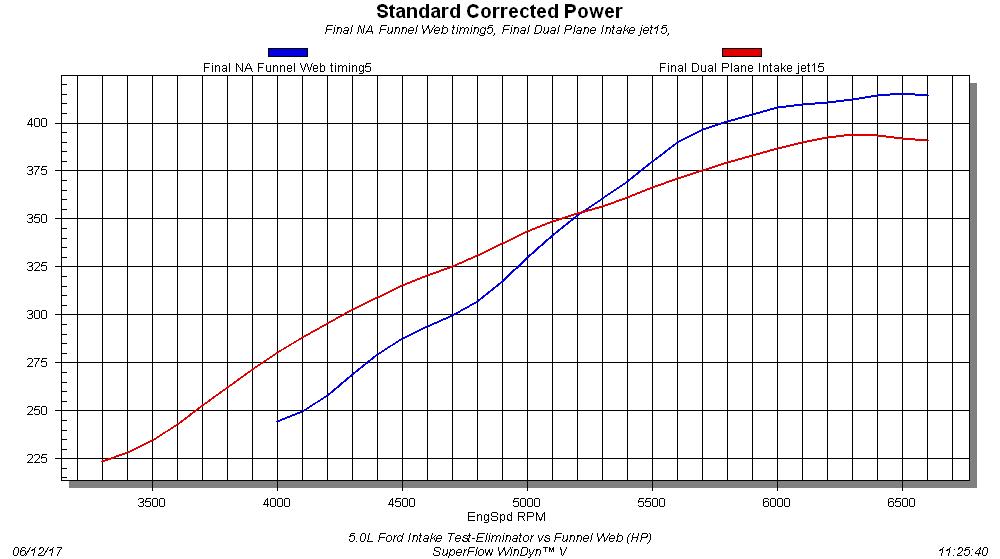
5.0L Ford Intake Test-Eliminator vs Funnel Web (HP)
This is a situation you will see time and time again when comparing the single- and dual-plane intakes. The single plane typically makes more peak power, but the dual-plane design counters with more low-speed torque. The crossover point in this test was 5,200 rpm, so you will have to decide where your motor spends more of its time. For an all-out drag race machine that runs from 5,000-7,000 rpm, the choice is obvious, but considerably less so for anything that will see street use.
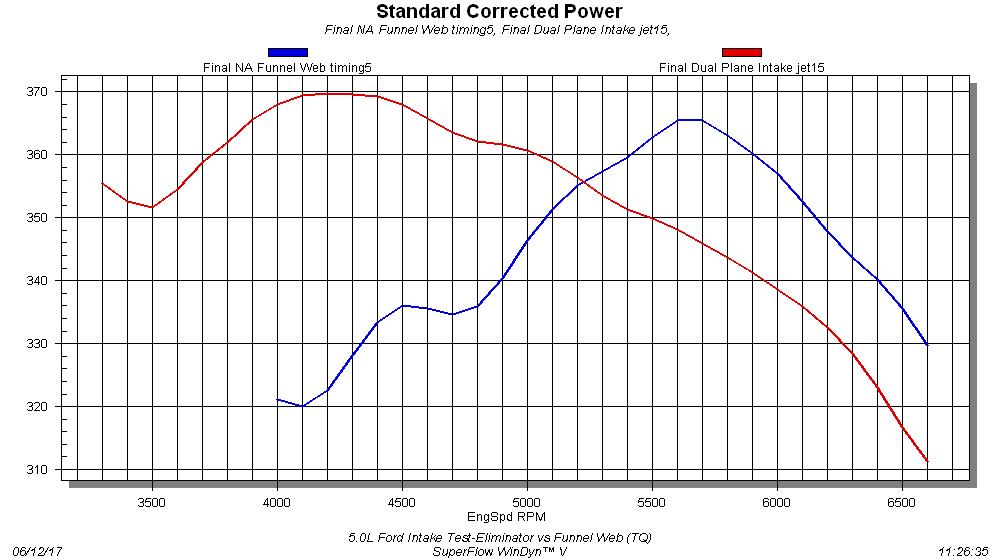
Ford Intake Test-Eliminator vs Funnel Web (TQ)
The torque curve was much more telling, as the loss of low-speed power was more pronounced. For most street, and even dual-purpose, street/strip applications, the extra grunt offered by the dual-plane intake will likely be more useful on a daily basis. If only there was a way to have the grunt of the Eliminator with the high-rpm power of the Funnel Web. The two made similar peak torque numbers (365 lb-ft for the single plane and 370 lb-ft for the dual plane), but the torque curves couldn’t be more different. That is why we test and show the entire power curves, rather than just provide peak numbers.
Sources: LKQ, Lkqpickyourpart.com; ARP, Arp-bolts.com; COMP Cams, compcams.com; Holley/Hooker/Weiand, holley.com; MSD, Msdignition.com; Speedmaster, Speedmaster79.com; Trick Flow Specialties, www.trickflow.com



